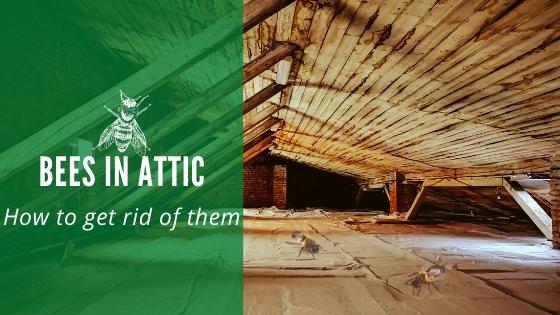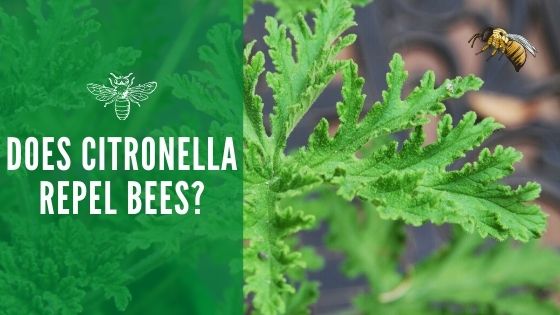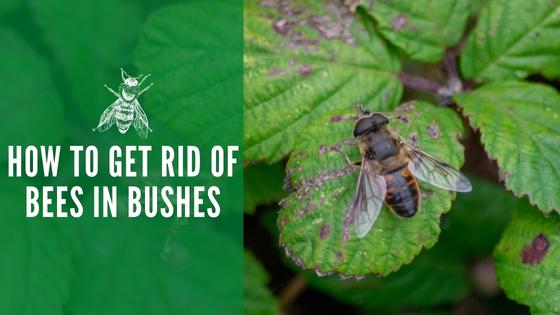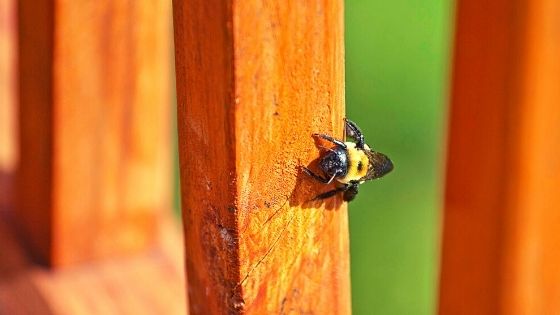Bees in Attic

If your attic is one of those places you hardly ever go to, then it is a good idea to go up and do an inspection for bees periodically. Bees in the attic are something that homeowners do not want to get out of hand. They can be a hazard and can destroy your home. Here is some information about why you may need to be concerned about bees in your attic and what to do if you find them.
What Kind of Bees Are in Attics?
Many types of bees find attics the perfect place to make a home. Here are some of the most common types of bees that you might find in your attic.
Honeybees
Honeybees are one of the most common types of bees that you might find in your attic or the walls of your home. They are often a swarm that has broken off from a larger hive outside your home. When honeybees swarm, the queen will look for a suitable spot to build her new hive. They love to build on the underside of the roof deck, but they prefer spots under 130 degrees so that the wax in their hives does not melt.
Honeybees can make about 10 to 15 pounds of honey in a month. This means that you can have up to 50 or 60 pounds of honey from a hive in your attic throughout the summer.
One of the problems is that this will attract other insects, such as ants, and it can cause mold to develop. This can cause the wood in the home to rot over time.
Carpenter Bees
Carpenter bees are one of the most important species of concern if you find them in your attic. They can do significant damage to wood. Instead of building large hives, they borough into wood, bamboo, and other hard plant materials.
One of the ways you can tell if you have carpenter bees is to find small holes in the wood that are about 1/2 inch across. If you have had Carpenter bees in the past, it is important to caulk or seal the holes because they will readily use old holes to lay eggs and raise their larva. One of the signs that you have carpenter bees is finding a pile of sawdust at the bottom of the tunnel.
Other Flying Insects You Can Find in Your Attic
Paper Wasps
Paper wasps make their paper-like nests from dead plant stems and deadwood. They mix these fibers with saliva to build their nests. They are often called umbrella wasps because their nests have a somewhat upside-down umbrella-like shape. Paper wasps are often mild-mannered unless they feel that you threaten their hive.
These wasps are often mistaken for hornets, which tend to be more aggressive. The way to tell paper wasps from hornets is by their nest. You can see the compartments inside the paper wasp nest where the larvae grow and develop into adult wasps. They can be found hanging on eaves, door frames, window frames, and the rafters of your home.
Hornets
Hornets in the attic are enough to strike terror in the heart of any homeowner. Hornet nests are often large, round, and covered by a paper-like substance. You cannot see the cells inside them like paper wasps or mud daubers.
The worst part about hornets is that they can populate an area easily, and they have a reputation for being aggressive towards anyone they see as a threat.
When a hornet senses a threat, it will send out a chemical signal to the other hive members, and they will often attack in mass. They are insects that an expert should only handle, and if you see them around your home, you should get help immediately.
Why Are There Bees in My Attic?
One of the reasons bees love your attic is that it is protected and feels as if it is safe from predators, especially if it is a place you do not often go to. They often get in through the attic louvers or gaps between wood components.
They have a ready water source in your downspouts and do not have to go far for food with the flowers and landscaping around your property.
The attic is dry and protected from the weather. They can often get in through small cracks, but predators, like birds, cannot fit through the same holes.
In the case of wasps and bees that use wood for their nests or yellowjackets that consume wood, they have everything they need to make a happy home.
How Do I Know If I Have Bees In My Attic?
You will find several signs if you have bees in your attic. Of course, the best way to make sure is to do a regular inspection and take a look at least once a month during the spring, summer, and fall months.
If the hive is large, such as in the case of a hornet nest, you might hear buzzing or hear bees hitting the wall. You might experience an odor, such as honey or mold.
Another good sign that you have bees in your attic is if you begin seeing them frequently in the living areas of your home. You might also see bees flying in and out of the louvers or gaps where the roof meets the wall.
Bees near your downspouts and drains might also be a sign that bees have taken up residence in your attic or around your home.
How Do You Get Rid of Bees in the Attic?
If you have these in your attic, and the nest is well established, it is usually best to call a professional to handle it. They can become aggressive when you try to remove the nest or disturb it in any way. Being in a closed space with many angry bees and no protection is not a good situation for anyone.
The best way to take care of bees in the attic is to seal any holes where they could enter the area. This means taking a good look around for any gaps between the wall and rafters or other wood components. You can fill these areas with caulk or a foam sealant.
Another thing you can do is to put window screening material on the inside of your louvers. This will prevent bees from getting in, but it will not restrict the airflow. You can also try something like spraying the rafters and wood with something like peppermint oil, but you will have to reapply it often, and it may take a considerable amount of oil for such a large area.

About 10 to 20 drops of peppermint oil mixed with water in a sprayer will effectively kill many bees and wasps; the oil plugs their spiracles so they cannot breathe. This should only be used with caution, and if there are a small number of bees/wasps because it takes a few minutes for them to die, and they may alert the rest of the hive and attack in mass before you can escape.
You can find suggestions on the Internet for techniques like placing a bag over the bee’s nest and then cutting it from the place of attachment, but this can be dangerous and is not suggested for those who are not professionals with the proper protection to keep from getting stung.
These methods are best used for hives that are on the outside of the house where you have a clear path to escape.
Bees in the attic strike fear in the heart of every homeowner, and that is why prevention is the best method.



